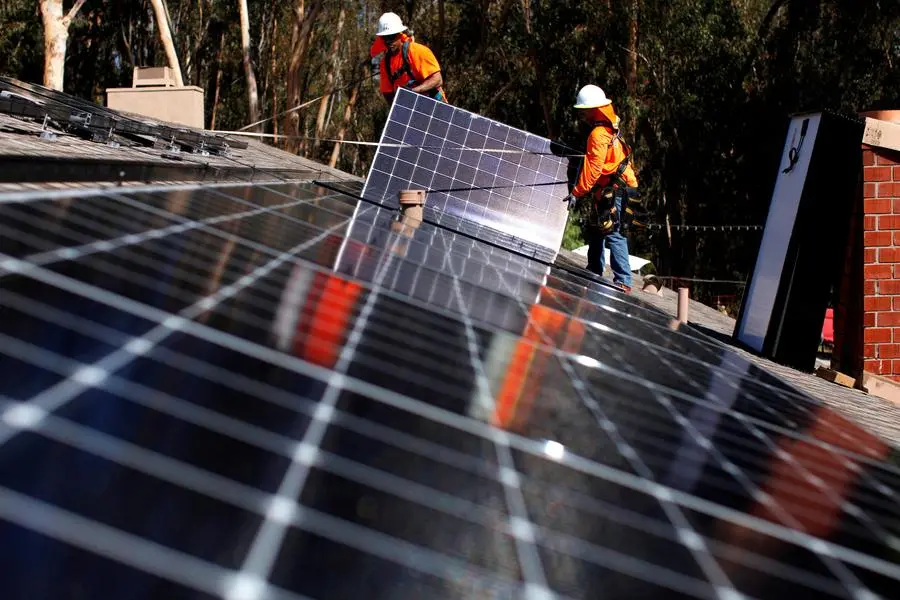PHOTO
Jobs in the U.S. clean energy industry in 2023 grew at more than double the rate of the country's overall jobs, and unionization in clean energy surpassed for the first time the rate in the wider energy industry, the Energy Department said on Wednesday.
Employment in clean energy businesses - including wind, solar, nuclear and battery storage - rose by 142,000 jobs, or 4.2% last year, up from a rise of 3.9% in 2022, the U.S. Energy and Employment Report said. The rate was above the overall U.S. job growth rate of 2% in 2023.
Unionization rates in clean energy hit 12.4%, more than the 11% in the overall energy business, it said. That was driven by growth in construction and utility industries and after legislation passed in 2022 including the bipartisan CHIPS Act and President Joe Biden's Inflation Reduction Act, the department said.
Construction jobs in clean energy, driven by the legislation and private-sector investments, "is expected to continue for decades to build out the clean energy infrastructure that we need," Betony Jones, the Energy Department's head of energy jobs, told reporters in a call. While unionized members "might move from project to project, there is continuity of that work in order for workers to make a career in that industry," she said.
Employment in the utility scale and rooftop solar industries grew 5.3% adding more than 18,000 jobs, it said. The solar installation industry in California, the country's most populous state, says it has lost more than 17,000 jobs due to high interest rates and the state's lowering of net meter rates that allow customers to be credited for excess power their rooftop panels generate.
New jobs in fossil fuels were mixed. The natural gas workforce grew by more than 77,000 or 13.3%, while jobs in petroleum fell more than 44,000 or 6%. Coal jobs fell nearly 8,500 or 5.3% as power generation continued to switch from coal to gas, wind and solar. White House climate adviser Ali Zaidi told reporters that the report showed the administration's commitment to pursue both energy and climate security.
Energy remained a mostly male workforce with an average of 73% in 2023 compared with the national workforce average that was 53% male, the same numbers as in the previous year. Women accounted for about half the energy jobs added in 2022, but only 17% of the jobs added in 2023, the report said.
(Reporting by Timothy Gardner; editing by Jonathan Oatis)























